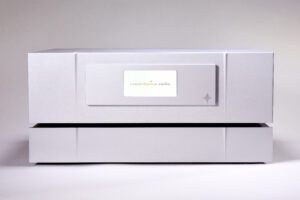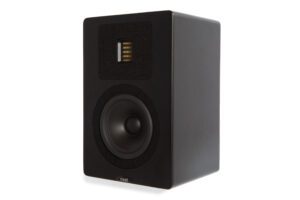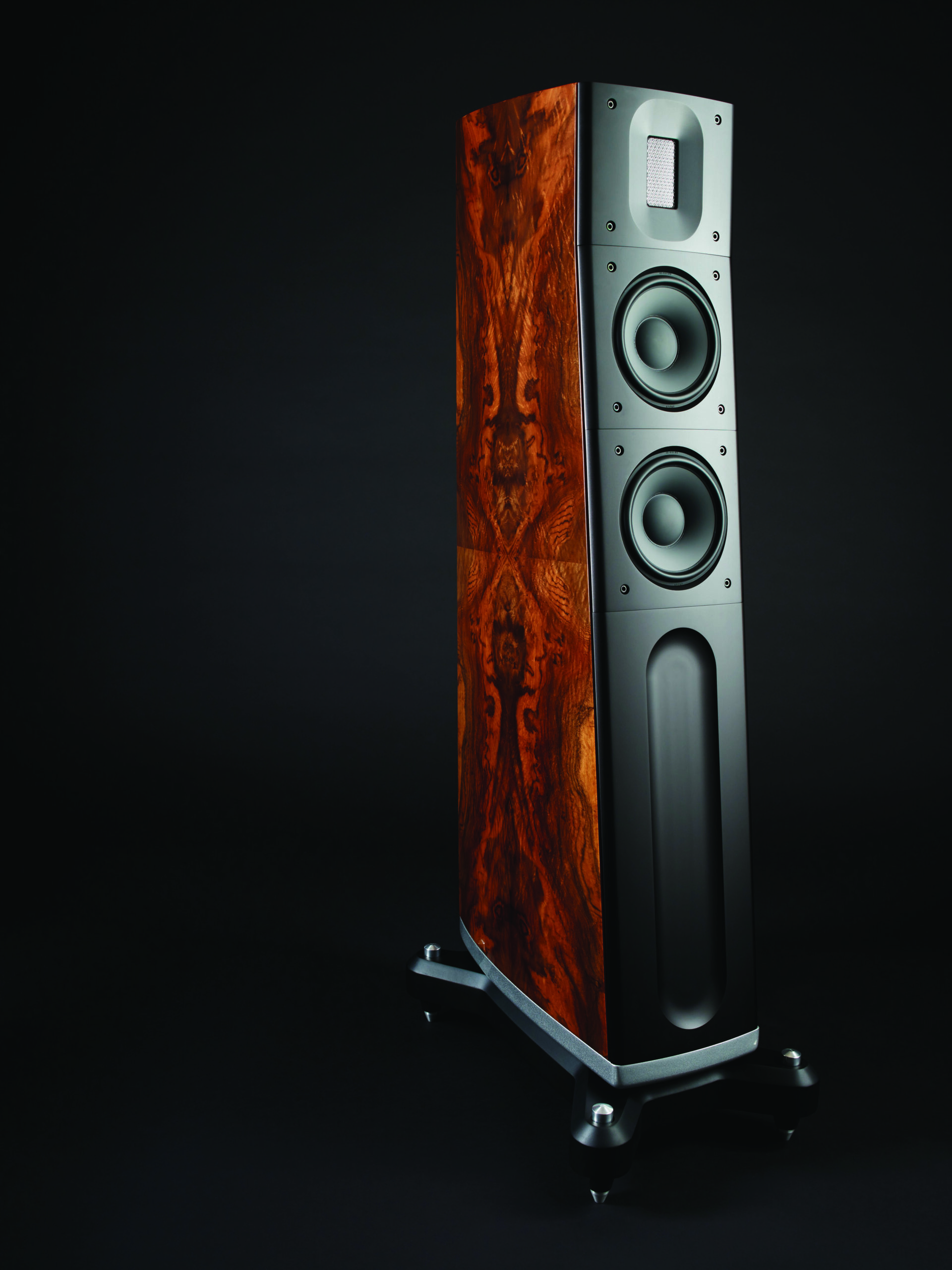
It’s hard to stop people from pigeonholing brands. Raidho – the Danish loudspeaker company – is often pigeonholed as a ‘high-end stand-mount’ and ‘cost-no-object flagship’ brand. The company makes a broad spread of high-performance, high-end loudspeakers. It’s simply that the outstanding TD1.2 stand-mount and towering TD4.8 flagship design receive all the column inches. There are five floorstanders in the range, and the TD2.2 is the smallest. The TD2.2 floorstander is also a perfect example of Raidho’s broader design skills.
Raidho uses the latest ‘TD’ series drive units, which supplanted the ‘D’ series in a roll-out across the whole line. Previous D2.1 loudspeakers featured mid-bass and bass drivers with 1.5 carats of industrial diamond applied to their four-layer ceramic-alloy cones. Amateur Raidho historians can identify this diamond application as the day the distinctive white cones turned jet black.
Enter tantalum
‘TD’ adds a layer of tantalum to that laminate cone structure. This dense, inert – and expensively rare – metal results in a higher degree of damping to the cone. Tantalum also provides a better surface ‘key’ for the diamond coat. This adds considerable cost to an already punishingly expensive process. As a result, prospective owners of sister-brand Scansonic will never see ‘TD’ level drivers in their more affordable loudspeakers.
The two-and-a-half-way Raidho TD2.2 takes advantage of the company’s modular approach to loudspeaker design. It uses the quasi-ribbon tweeter found in the whole range and 165mm mid-bass driver units shared with the TD3.2. Like all Raidho drivers, both units are hand-made and sit in individual – and refreshingly chunky – aluminium baffle modules. This makes repairing a TD2.2 a relatively simple process of replacing driver and its housing in one. The hand-made aspect means variations in drive unit do not apply.
Building the drive units into their own baffle has another advantage; the added rigidity allows Raidho to ‘go to town’ on the driver. In the case of the ribbon tweeter, this allows a fully sealed isodynamic unit with a neodymium magnet array. This tweeter – known as ‘FTT75-30-8’ to its friends – has an ultra-thin polymer membrane weighing just 0.02g. The zig-zag voice coil is etched on this membrane. As a result, the tweeter has no inherent resonance and stores no energy.
The Central Scrutinizer
Meanwhile, those 165mm drivers aren’t just all about the cones. They also feature such finery as titanium voice coils. But the main benefit to that built-in baffle comes in the shape of a 1.1-tesla magnet. However, every aspect of driver design – from dust-cap to suspension – has come under Raidho’s scrutineering gaze.
The last great advantage of the modular baffle design is that it allows greater and easier time alignment. Those mid-bass and bass units benefit from being slightly in front of that superfast tweeter, which must be as nearly perfectly vertical as possible.
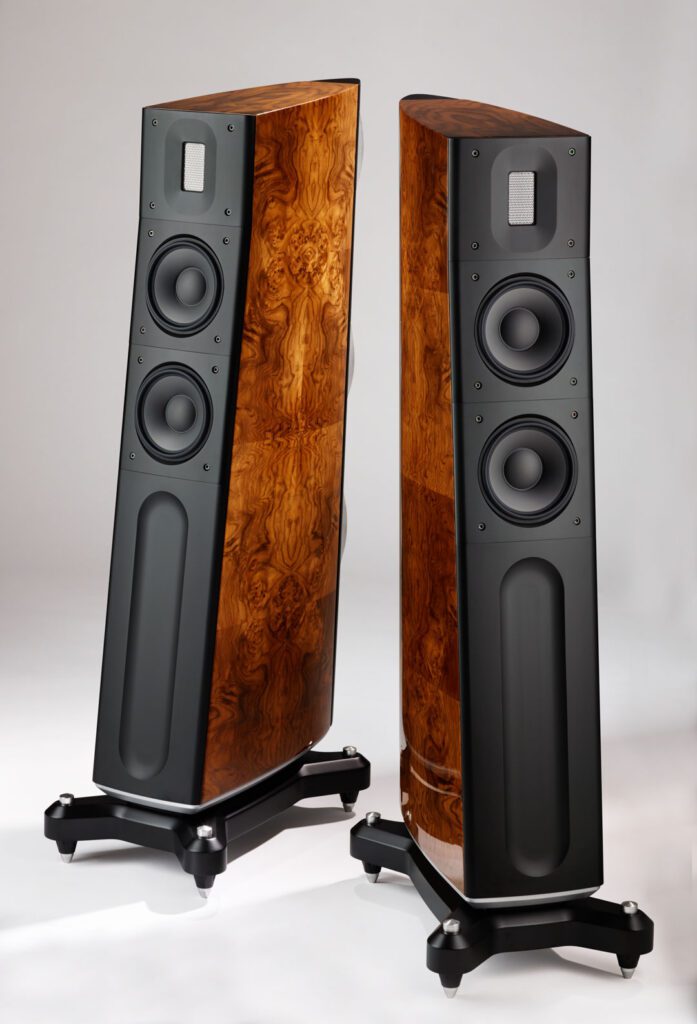
If the front baffle is modular, the loudspeaker’s rear is as solid as they come. It’s a solid anodised black aluminium panel, reflecting the apex of the lute-shaped cabinet. This ‘chonky’ back panel has three part-covered ports and a single set of speaker terminals.
This back plate acts like the loudspeaker’s spine, and the alloy base also forms an integral part of the design. Outriggers are integrated into that base, and the speaker rests on Raidho’s unique and clever ‘floating’ resonance control feet. These are not simple cones or spikes and have deliberate ‘chatter’ when the speaker is not in situ. This is deliberate and nothing to worry about. When they take the weight of the TD2.2, the chatter stops, but their ability to help keep the speaker and floor at arm’s length remains.
Installation is a little exacting but not as demanding as many similarly priced high-end speaker designs. Make sure the speakers are a reasonable distance from side walls, and the speakers are slightly less toed-in than usual. The significant install requirement is to ensure the tweeter is vertical and the listener’s ears are at tweeter height. I’d also suggest making a ‘first fit’ installation in approximately the correct position and then fine-tuning that installation a couple of times, the second time once the loudspeakers are entirely run in. Fortunately, those resonance control feet have rounded cone points instead of carpet and wood-piercing spikes, so fine adjustment is useful.
Ear height relative to the tweeter is critical. While this has improved immeasurably over the years, the radiation pattern of the tweeter in real-world terms means if your listening position looks like you have been melted over a low chair, a lot of what the Raidho is telling you is – literally – going over your head. As you can’t correct this by angling the drive unit at you. I know people laughed at it at the time, but the lobster chair (whether or not Gamut modified it) would place you at the optimum height.
Hidden depths
Perhaps the overlooked issue in installation is the depth of the loudspeaker and the fact it needs at least 30cm from the rear wall, and in most cases, I’d make that at least 1m. As the loudspeaker is deceptively deep (we’re used to the depth of a narrow front baffle loudspeaker being about one and a half times the loudspeaker’s width, but these challenge that concept), it demands a larger listening space. I think a room at least 12’ wide and 16’ long is required, and I’d be happier seeing them in rooms closer to 20×24’. In a room that size, both the sonics and the physicality of the loudspeakers fall into place.
Also, although the loudspeaker is relatively easy to drive (Raidho claim 88dB sensitivity and a six-ohm nominal impedance), quality demands quality. Don’t skimp on the electronics or the cables; the Raidho TD2.2 is internally wired with Nordost. I loved the sound of the TD2.2 played on the end of a Burmester 911 Mk 3 power amp. In short, match it with electronics of similar gravitas, please.
The review pair of loudspeakers arrived fully run-in, so there was little way of telling how long they needed to condition themselves and how significant a change that running-in caused. From experience of past Raidhos, however, there’s a good hundred or so hours between ‘good’ and ‘great’; the tonality of the loudspeakers doesn’t materially change over this period, but it just becomes more open and lively sounding after a few miles on the clock.
I’ve been listening to Raidho loudspeakers for some time, and they have always been exciting and detailed, but many felt previous models had a ‘step’ between the treble and the rest of the loudspeaker.
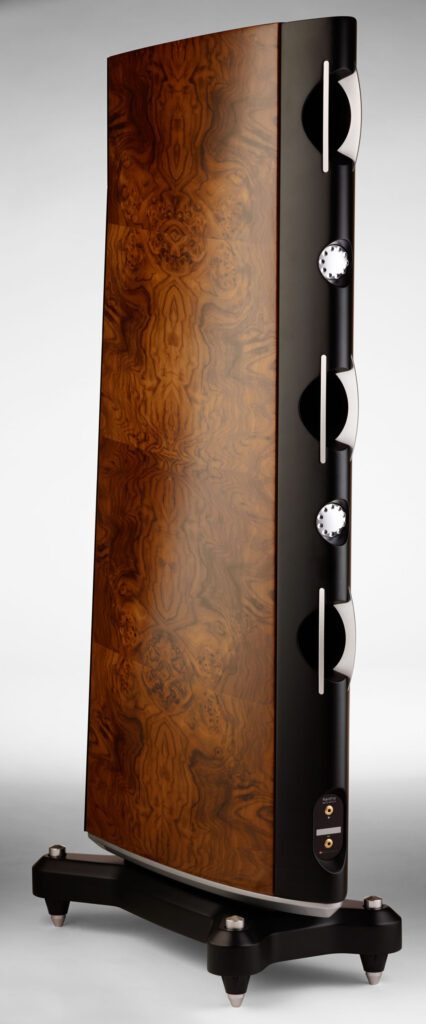
However, when we got to the D and TD series, any such disconnect between treble and the other drivers was little more than a memory. The first thing that strikes the listener about the TD2.2 is the glorious top-to-bottom coherence. This comes across best in close-knit, small-group jazz from the late 1950s/early 1960s, such as ‘Autumn Leaves’ from Cannonball Adderley’s Somethin’ Else [Blue Note]. This is a record all about ‘feel’ and the interplay of the musicians riffing off one another; any lack of coherence comes across as a disconnect between musicians and quickly turns this masterwork into just another jazz session. The TD2.2 laps this music up and plays it so subtly that you feel like you are in the middle of the band, listening to musicians at their zenith.
This also comes across in the rhythmic and staging properties of the loudspeaker, which are both first-rate. Raidho doesn’t necessarily obsessively chase ‘Pace, Rhythm & Timing’ in its designs, but its transient speed gives them a tidy ability to keep a beat. However, Raidho does place great importance on a soundstage in terms of dimensionality, the solidity of the image, the solidity of instrument sounds in that image and sheer scale… and the TD2.2 shows why. It’s a genuinely holographic performer; listening to the sublime ‘Glory Box’ by John Martyn [The Church with One Bell, Independiente], the soundstage was so full and spacious, it burst out of the room. To my mind, this is one of the best cover versions ever, and I sat in front of the TD2.2 transfixed by the holography of the image, the way the loudspeaker could articulate Martyn’s ‘interesting’ singing style… everything.
Grace and poise
There is also a great sense of poise in the sound, which makes the TD2.2 an unflappable performer. It doesn’t matter whether the performance is just a singer and a piano, such as Jarvis Cocker and Chilly Gonzales’ ‘Laura’ [Room 29, DG], dense, multi-layered rock like ‘Pneuma’ from Tool’s Fear Inoculum album [RCA] or even a full-blown orchestral event like the final movement of Mahler’s eighth symphony [Solti, DG]; the TD2.2 rises to the occasion.
Words like ‘grace’ and ‘poise’ could easily be code for ‘lightweight’ but the sound of the TD2.2 is also highly muscular. Where this muscularity differs from some of the big names in high-end loudspeakers is the TD2.2 is more ‘sinewy’ than ‘pumped’; it’s a distance runner rather than a sprinter. Its sound is powerful and dynamic but less immediately explosive and perhaps more expressive. The trade-off here is ultimate headroom; if you like playing complex music at high volume levels, the TD2.2 can start to close in on itself, especially in the lower registers. This partly comes because the loudspeaker is so clean and detailed you tend to play it louder. The moment the usually wide, deep and surprisingly tall soundstage begins to waver and the rhythm begins to get a little behind the beat, it’s time to turn things down. Especially as you are probably wrecking your hearing at that kind of volume level.
The sinewy vs. pumped concept is not a perfect analogy; one of the joys of listening to the TD2.2 is how quicksilver-fast those drivers are when dealing with the fast-twitch synth sound of Trentemøller’s ‘Chameleon’ [The Last Resort, Poker Flat]. Still, those deep tones are played with control and tension rather than the bombast of many rivals. This tension makes the track ‘nightmare fuel’. This track is also a torture test for ports; any resonance or ‘chuffing’ will show up as bass notes fall into one another; here, the almost square-wave notes start and stop precisely.
What I like about the bass presentation of the Raidho TD2.2 is that it’s ‘comfortably’ deep without attempting to plumb the depths unnecessarily. Remember that room-size discussion? It’s an all-too-common thing among high-enders in metropolitan areas to shoehorn the largest possible loudspeakers into the smallest room possible. And it often doesn’t work, not simply because it sounds like the world’s most oversized headphones but also because the sheer amount of bass energy put into a smaller room sets off standing wave resonances that give the sound an impossible-to-control bass boom. The TD2.2’s bottom end is perfectly managed to suit a high-end system in a medium-sized room; good, deep, and powerful bass that never overawes regular-sized listening rooms.
No adenoids here
In truth, I’m struggling to find a problem with this loudspeaker in real-world terms. There’s a hint of softening around the lower mid-range, which – somewhat paradoxically – can be heard by giving piano sounds a very slight perceived lift to the middle registers in a manner not dissimilar to classic BBC loudspeaker designs. I don’t mind this as it also helps make voices sound less ‘adenoidal’. All of which means that the nearest the TD2.2 gets to ‘wrong’ ends up sounding more ‘right’!
Let’s not pretend; the Raidho TD2.2 is not a cheap loudspeaker, but it is a very, very good loudspeaker. Set against the ‘known’ rivals in its class (many of which come from the other side of the Atlantic), it has a lighter and more deft touch than most; you could almost say it’s a Continental European sensitivity that makes it one of the leaders of the pack in terms of first-class sound in real-world rooms. And, you are buying a bleeding-edge design in the process, which sounds convincingly like the real deal when partnered with the right equipment. If you have the right room and equipment to partner with the TD2.2, this might be the best loudspeaker you’ll ever hear.
Technical specifications
- Topology 2.5-way floorstanding loudspeaker
- Bass Loading Bass reflex Port in rear. Impulse optimised
- Drivers 1 × Raidho TD Ribbon Tweeter, 1 × 6.5” Raidho Tantalum Diamond midbass , 1 × 6.5” Raidho Tantalum Diamond bass
- Crossover Points 400Hz and 2.4 kHz stepped slope
- Frequency Range 32Hz–50 kHz
- Sensitivity 88dB
- Nominal Impedance 6 Ohm
- Power Requirement 50–150 Watts
- Finishes Piano Black, Walnut burl veneer or any colour to order
- Dimensions (W×H×D) 200 × 1055 × 520 mm
(With feet 320 × 1150 × 520) - Weight 5 kg
- Price £39,500/pr (walnut/personalised finish, £42,500/pr)
Manufacturer
Raidho
UK Distributor
Decent Audio
decentaudio.co.uk
+44(0)1642 263765
By Alan Sircom
More articles from this authorRead Next From Review
See all
PrimaLuna EVO 100 phono preamplifier
- Apr 22, 2024

Reiki Audio SuperSwitch Master Pro + Servant Pro
- Mar 27, 2024

Melco Audio N1-S38 music server
- Mar 27, 2024








